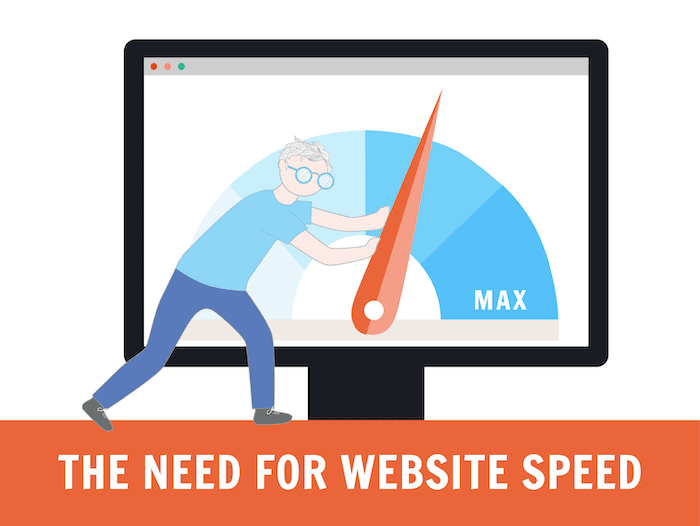
When you start off your e-commerce journey, there are a bunch of things that suddenly matter a whole lot. Your product quality, pricing, paid marketing, customer service, social media, website design and the list goes on. However, for most merchants starting out website speed may not be on that list. As you continue in your journey though you may find that most highly successful e-commerce businesses care about speed. A lot. Have you ever wondered why it’s crucial to have good performance and speed? Here’s why.
Firstly, successful merchants care and often obsess about their customer experience. Website speed is critical for a positive user experience. A slow-loading website undermines the effort you have put into your product and can lead to increased bounce rates, where users leave your website before even seeing your content. Google Research has shown that if a website takes longer than 3 seconds to load, users are over 50% more likely to abandon the visit.
This missed sales opportunity may even hamper the brand. What is worse is if you are paying for ads, marketing, etc. to send traffic your way, only to see them bounce.
Another important factor to consider is the impact of website speed on conversion rates. A study by Akamai has shown that a 100 millisecond delay in page load time can result in a 7% reduction in conversions and a 2 second delay in page load time increases bounce rates by over 100%. According to another case study done by Google, the probability of a mobile site visitor bouncing, or leaving a site, increases by 32% as page load time goes from 1 second to 3 seconds. Furthermore, as page load time goes from 1 second to 5 seconds, the probability of bouncing increases by 90%. This means that if a website takes too long to load, visitors are more likely to leave and may never return, resulting in lost sales and leads. Speed also benefits loyalty and repeat transactions. Skilled found that 79% of customers are less likely to repurchase from an online store if they were “dissatisfied” with the site's speed (i.e., you’re more likely to get repeat customers if you have a fast site).
In addition, website speed is also a critical factor for Search Engine Optimization (SEO). Being pushed down in search listings has a significant impact on your visibility, organic traffic and ultimately impact your sales and revenue. This means that your website's speed can impact your visibility and organic traffic, which can ultimately impact your sales and revenue.
So, what can you do to improve your website speed and performance? Here are some tips:
- Optimize images: Your customers engage with your images much more than they do with text. Most merchants know that and spend a lot of time ensuring their images perfectly highlight their product and brand. Unfortunately, oversized images can dramatically slow down your speed. Shopify automatically compresses images and resizes images as well as determines the best file format to serve an image in. All of this helps with your speed. However, there are still things that you can do to further optimize your images. It’s never a bad idea to run your images through a free image compressor like shortpixel.com and check if you are happy with the resolution and the way the images appear. Using the right format is also very important, as is serving the image in the right format to browsers that support modern file types. As an example, if you have a PNG with no transparent pixels, it may be better to use a JPEG. There are many apps on the Shopify app store that further optimize and compress your images. In addition, they may help with other aspects of image optimization such as setting alt attributes for your images.
- Prioritize above-the-fold content: Above-the-fold content refers to the top part of a webpage that is visible without scrolling. This is what visitors see the moment they land on your website. Research has shown that users tend to spend the majority of their time on the above-the-fold area, and are more likely to engage with content that is immediately visible. Prioritizing above the fold content is a website design practice that takes a look at what appears above the fold. You then judiciously choose elements that serve your objective while ensuring that the above-the-fold content renders as quickly as possible. Done the right way, optimizing above the fold content can help build visitor trust, improve your rankings, and even lead to more conversions. While it is easy for us to cover this in a paragraph, the task of optimizing above-the-fold content is not that easy and may need many merchants to work with professionals but the benefits are considerable.
- Optimizing third-party apps: Third-party apps significantly impact your speed when you use it with Shopify themes. After all that effort to optimize your theme, your images, one of the worst things that can happen is to be impacted by the apps that you use. Yes, apps often help merchants tremendously but not all app developers focus on how their app affects performance. When you install an app, look for the speed badges from Shopify that say no or low impact from the app to your store speed however these speed badges are hard to come by and only a few apps have them. So it is important to monitor an apps impact on your store speed. When you uninstall an app, check their documentation to make sure you can cleanly remove the app and that there is no residual code left over.
- Consider using AMP: Having said that AMP genuinely is a powerful way to speed up your pages. Because AMP pages avoid many of the pitfalls that slow speed down and create Our AMP app creates alternate AMP versions of your regular pages which serve as fast landing pages. Google and search engines serve up your AMP pages and use the speed of your AMP pages to calculate your Core Web Vitals score giving you an SEO bump. There are some drawbacks of AMP pages – for example, not all apps work on AMP pages. However, many large merchants still rely on AMP to improve their speed, their customer experience and ultimately their profits. This is the right time to plug our product.
- Monitor website speed regularly: Speed optimization is not a one-time exercise. Just like you never stop working on your business, speed and your customer experience needs repeated check-ins and should be a continuous process. This will ensure that your customer experience remains great even as customers change, web standards change and while your store keeps on evolving. The first step is monitoring. This can help identify areas for improvement and make necessary changes to improve website speed. The importance of speed and performance is why Shopify introduced performance to the merchant dashboard. Tools like GTmetrix and PageSpeed Insights help you get more granular and real-world information and monitor your Core Web Vitals (key metrics that measure your site performance).

Speed Case Studies.
Amazon is one of the world's largest eCommerce companies was one of the first to recognize the importance of speed and they have consistently talked about it over the last decade. Amazon found that for every 100ms of load time, they experienced a 1% decrease in revenue. This may not seem like much, but when you consider that Amazon generates billions of dollars in revenue each year, a 1% decrease can have a significant impact on their bottom line. Optimizing speed is hard and Amazon uses a variety of techniques, such as minimizing HTTP requests, compressing images, and using content delivery networks (CDNs) as well as extensive code optimization. Thankfully for Shopify merchants, Shopify does all of the heavy lifting on the engineering side but there is still a lot that is only in your hands as a merchant.
Shopify worked with Sunday Citizen to improve their key performance metrics. Some of what they did are moving render blocking resources to Shopify’s CDN, updating apps to more performant versions, proper sizing of images and ensuring that the images were responsive, optimizing above-the fold content by removing lazy-loading from above the fold, cleaning up CSS, etc. All this allowed them to achieve significant improvements in two key Core Web Vitals metrics - 25% improvement in Largest Contentful Paint and 61% in Cumulative Layout Shift at the 75th percentile. This resulted in 4% decrease in bounce rate and over 6% increase in conversion. Users were also almost 4% more likely to add products to the cart.
In conclusion, if successful companies care so much about their site performance and speed, maybe you should too. Performance is an important factor in the success of your business.
About us
We are Ampify. We make apps that help merchants improve performance and create more engaging experiences for your customers. Learn more about what we do and our apps here.